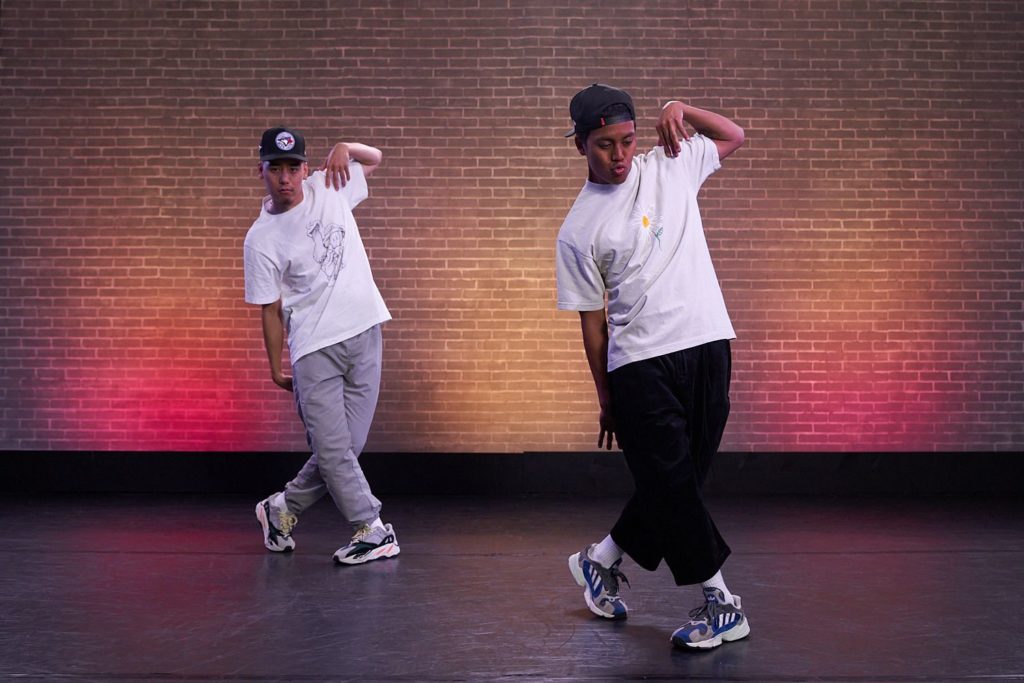So, your kid has shown an interest in hip-hop? We’ve got you covered! From its origins in New York City in the 1970s to its place in music videos, commercials, and large-scale dance productions and studio classrooms today, hip-hop is one of the most popular forms of dance worldwide. Here’s a basic rundown of the top ten terms that parents should know to be prepared to understand the phenomenon!
8 Count
As in many other styles of dance, an 8 count is a set period of time, most commonly two bars of music in 4/4 time, used by the choreographer to plan out a dance work piece by piece.
B-Boys and B-Girls
Breakdancers who are breaking in on a DJ’s beat. Aka break-boys and break-girls.
Cleaning
Not “fresh ‘n clean,” but not far from it, cleaning is the approach that the teacher takes to focus on certain sections of the dance choreography to get the dancers to “clean” up–or make more precise–their movements and positions. Because hip-hop often has large teams of dancers in the choreography, cleaning is an essential part of working through larger productions.
Cypher
At its core a Cypher is a dance event where the dancers group around in a wide circle with enough room in the center for free and active movement. Then one by one they take turns going into the center and expressing their moves to the groove of the music. Any kind of style can come out in the cypher, and the dancers remaining in the circle are far from passive. They make moves, shout encouragement or derision, and laugh and clap while they all wait their turn to exercise their moves to the groove.
Freestyle
Hip-hop itself requires a degree of spontaneity in the choreography. Freestyling is just that: Moves based on the dancer’s internal repertoire that fit the flow and beat of the track. Much like when an MC is spitting freestyle on the mic, the dancer comes into the mix with nothing planned but their own abilities and style as preparation.
Fundamentals
Also referred to as the foundational styles of hip-hop, fundamentals are the dictionary of moves within the styles that influenced the genre that every dancer learns to build their portfolio. Dance styles like Street Jazz, Breakdancing, Popping and Locking, and many more will be included in the fundamentals, even though technically only Breakdancing is considered to be in the direct lineage of hip-hop.
Groove
In hip-hop, groove means more than one thing. First and foremost it is a quality of the music that inspires movement. DJs will consciously drop tracks to get a groove going on the floor amongst the dancers. But groove is also the movement of the body itself. When you are grooving you are using your body as an entire instrument, and instead of isolating specific body parts for specific moves as one would do in ballet, there is an emphasis on the entire body moving along as a kinetic expression of the music. That’s when you’re grooving!
Party Dancing
These are dance styles and sensations that were developed–often along with specific songs and tracks–to be performed by a lot of people in a social setting. While not necessarily hip-hop, some of these moves have been incorporated into the modern hip-hop style of dance. Good examples of party dancing are the Nae Nae and The Harlem Shake.
Street Dance
An important development in the history of hip-hop was its separation as a distinct form from the general umbrella of street dances performed by dancers in New York City in the 1970s. Breakdancing came from street dancing, and from breakdancing, we get the origins of hip-hop.
Swag
Originally short for swagger but meaning a mixture of style and confidence and ability, you have to develop your swag if you’re dancing hip hop.

